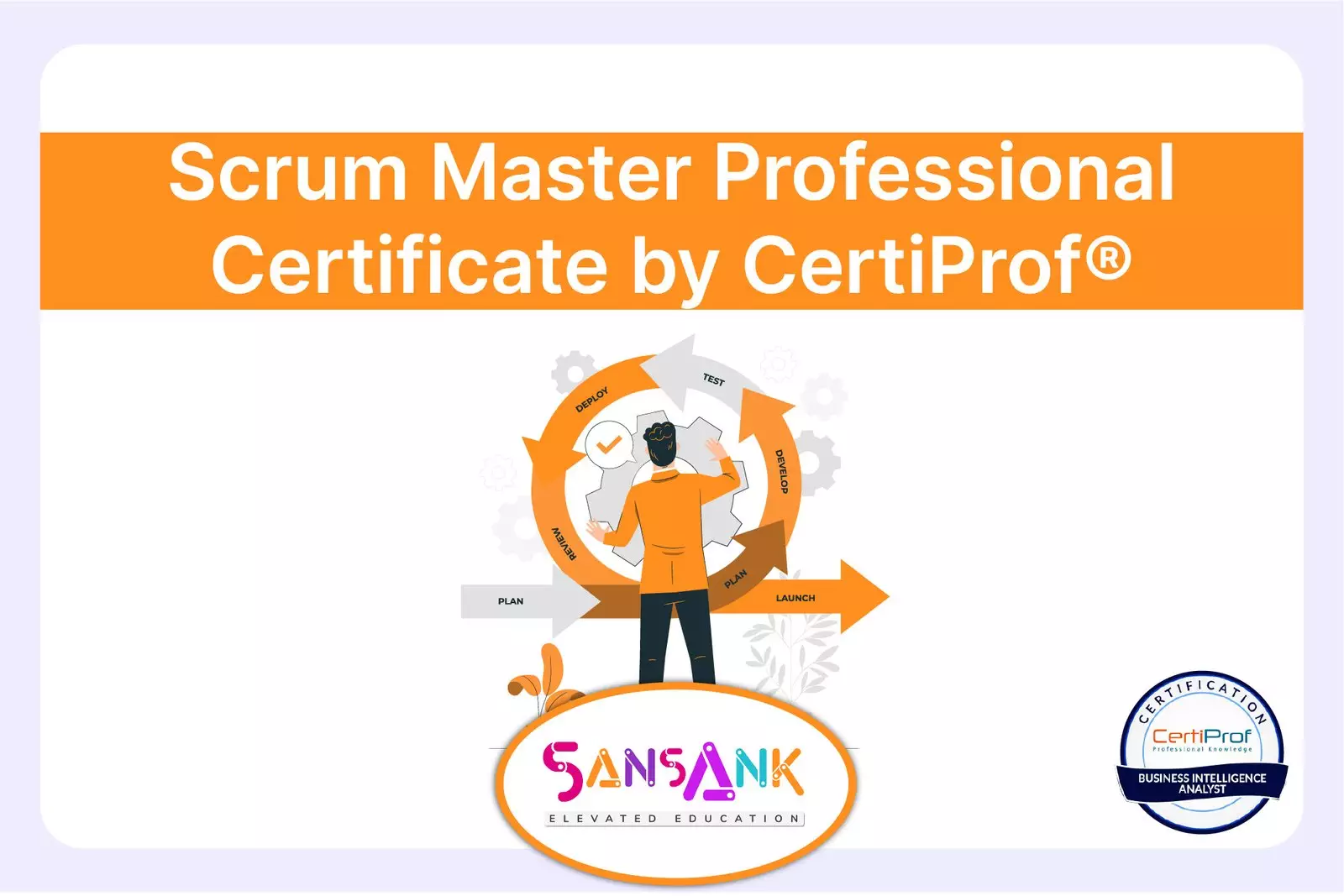Scrum Product Owner Professional Certificate by CertiProf®
About This Course
SansAnk Academy offers a comprehensive Scrum Product Owner Professional Certificate course that equips participants with the skills to excel in the role of a Product Owner, enabling effective product development through Agile principles, backlog management, and stakeholder collaboration.
What You'll Learn
The Scrum Product Owner Professional Certificate course provides a comprehensive overview of Agile and Scrum, covering essential topics such as Scrum practices, planning, events, project monitoring, advanced Scrum concepts, and equips participants with the skills necessary to excel in the pivotal role of a Product Owner.
Course Details
- Price: 20,000/-
- Duration: 2 Weeks
- Batch Size: 1-5 Candidates
Certification Exam
- Format: Multiple choice
- Questions: 40
- Language: English/Spanish/German/Portuguese
- Pass Score: 32/40 or 80%
- Duration: 60 minutes
- Open book: No
- Delivery: This examination is available Online
- Supervised: It will be at the Partner’s discretion
Course Benefits
- Certiprof Certificates
- Life-time notes access
- Training recording
- BA community access
- Free knowledge sessions
Eligibility
This certification is appropriate for anyone who is interested in becoming a Scrum Product Owner.
Curriculum
This introduction sets the stage for an exploration of Agile principles and practices. It covers the fundamentals, such as what Agile is, the Cynefin Framework, the Agile Manifesto and its aspects, the principles underlying the manifesto, and the Declaration of Interdependence. It delves into the significance of agility, both in general and in a business context. The comparison between Agile methodologies and traditional project management is highlighted, focusing on Scrum as a key framework. The evolution of the Scrum definition and its patterns are discussed, emphasizing the importance of the Scrum Guide as a foundational resource.
Scrum Theory forms the bedrock of the Scrum framework, emphasizing empiricism as a source of knowledge and decision-making. It embraces Lean Thinking principles to minimize waste and maximize efficiency. Scrum is inherently iterative, allowing for continuous refinement. The Three Pillars of Scrum - Transparency, Inspection, and Adaptation - ensure an effective, flexible, and responsive approach to complex project management.
Scrum Values are the core principles that guide the behavior and actions of individuals and teams within the Scrum framework. These values, which include Commitment, Focus, Openness, Respect, and Courage, serve as the foundation for collaboration, adaptability, and achieving success in Scrum projects. They foster a positive work environment and encourage teams to work together effectively to deliver high-quality products.
Scrum Team is at the heart of the Scrum framework, consisting of several vital roles and key components. This includes the Product Owner, who defines the product vision and goals, as well as the Scrum Master, who facilitates the Scrum process. Developers, with their unique characteristics and responsibilities, form the core of the team. Effective communication and collaboration with stakeholders, who can be divided into various groups, are essential for project success. The dynamics within the Scrum Team and its interactions with stakeholders are crucial elements in agile project management.
In this section, we'll explore key concepts in Agile product management and project estimation. These concepts encompass fundamental aspects such as product tracking, management, and estimation techniques like Planning Poker. Understanding these concepts is crucial for effectively delivering value in Agile projects and ensuring successful product development.
Scrum Artifacts are essential elements in the Scrum framework that help manage and track project progress. These artifacts include the Product Backlog, which should be DEEP (Detailed, Estimated, Emergent, and Prioritized), and the Sprint Backlog, which commits to achieving a Sprint Goal. Understanding the Commitment to the Definition of Done is crucial for maintaining quality. User Stories, with their unique structure and characteristics, play a pivotal role in defining requirements, while the Task Board aids in tracking tasks and time-boxing helps manage project timelines. These artifacts and practices are central to the success of Scrum projects and contribute to effective Agile development.
In the realm of Product Management, several critical concepts come into play. Achieving "Product-Market Fit" is a central objective, as is the development of an "MVP" (Minimum Viable Product) to meet customer needs. Lean principles and processes are often employed as a strategy for efficient product development, while the Kano Model helps understand customer satisfaction levels. Agile Product Roadmaps provide a strategic framework, and various scaling methods are used to expand product impact. Tools like Scrum Boards and Kanban, along with metrics like Velocity, are instrumental in managing and optimizing product development processes. These concepts collectively shape effective product management strategies and practices.
Scrum Events are pivotal gatherings within the Scrum framework, each serving a unique purpose in promoting transparency and progress. They include "The Sprint," "Sprint Planning," "Sprint Backlog," "Daily Scrum," "Sprint Review," and "Sprint Retrospective." Each event contributes to the iterative and adaptive nature of Scrum. Techniques for conducting a retrospective and the stages involved are also explored, highlighting the continuous improvement aspect. Moreover, the SPOPC™ Exam and badges are indicative of Scrum proficiency and accomplishments within the framework.

Have Any Question?
“Unlock Your Potential Today! Connect with Us and Take the First Step towards a Brighter Future!”
- +91-62651-60006
- teachme@sansank.com
